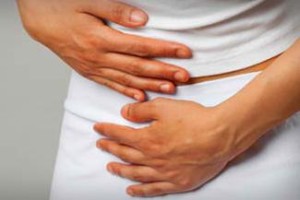Painful Bladder Syndrome: Physical Therapy for Interstitial Cystitis
Interstitial Cystitis (IC). Ever heard of it? IC is also called Painful Bladder Syndrome. Have you ever had pain in your bladder? It’s not easy to deal with on a daily basis. I’ve learned over the years that most of our normal bodily functions we take for granted; especially those of the bladder and bowels. These are not areas I would wish anyone to have difficulty controlling or suffer with pain.
 I have seen a number of patients with IC. The bladder does not only hurt, but it feels like one has to urinate all the time. Pain is often relieved following urinating, though she likely has pain during urination as well. What happens to people with this condition? They often stop drinking enough fluids. Consciously or subconsciously, they believe if there is less fluid in their bladder then they will experience less pain.
I have seen a number of patients with IC. The bladder does not only hurt, but it feels like one has to urinate all the time. Pain is often relieved following urinating, though she likely has pain during urination as well. What happens to people with this condition? They often stop drinking enough fluids. Consciously or subconsciously, they believe if there is less fluid in their bladder then they will experience less pain.
As I teach all my patients dealing with any bladder issue, drinking enough fluids is critical to the health of our bodies and bladder. The recommended amount is 6-8 glasses of water per day. If you begin urinating prior to your bladder filling fully, your body will lose the normal cycle of: bladder filling, cue to brain, conscious thought to go to the restroom, sit on the toilet, relax the pelvic floor, and the bladder muscle releases the urine. Urinating before you really have to go will train the bladder to need to go before filling. One of my patients with IC was urinating every 30 minutes! Imagine how this affects work and a social life.
Facts About Painful Bladder Syndrome
Women are affected 10:1 compared to men. Pain is aggravated by stress, menstruation, and intercourse. And there is no specific cause.
The American Urological Association (AUA) developed guidelines on the care of those suffering with IC. The first line of defense is relaxation, stress management, pain management, patient education, and self care/behavioral modification. The second line of defense is manual physical therapy treatments, oral medication, and bladder medications.
Manual physical therapy can include techniques that can decrease muscle tenderness, lengthen shortened muscles, release painful scars or other tissue restrictions. While treating any patient with pain, we go over relaxation and bladder behavioral techniques. This is a time when Kegels, or pelvic floor contractions, are not appropriate, because we do not strengthen muscles that are already tight.
What is wonderful is that a few tips and lifestyle changes can make a big difference. Medications can be helpful, though many people are looking for more holistic treatment approaches. Pelvic physical therapy, acupuncture, or even chiropractic care, can help with decreasing stress, realigning the body, and manually changing the muscle tension and trigger points that often arise with any painful condition.
Visit ichelp.org for more information. I’d also be happy to chat in detail to see if physical therapy would benefit you.
If your bladder is working well with no pain or complications, be thankful!
Related Posts:
